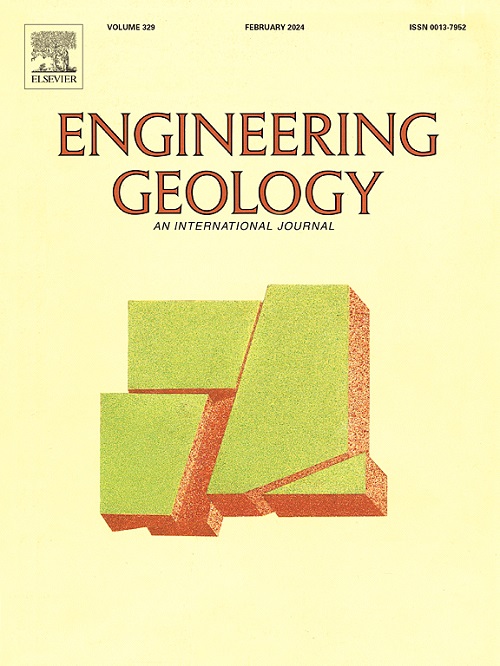可解释的同震滑坡预测:揭示多向峰值地面加速度的潜力
IF 8.4
1区 工程技术
Q1 ENGINEERING, GEOLOGICAL
引用次数: 0
摘要
目前的同震滑坡评估主要采用机器学习方法,峰值地面加速度(PGA)作为评估滑坡影响的主要协变量。然而,现有的研究往往忽略了垂直地面运动的影响,只关注水平PGA,这并不能反映现实情况。为了解决这一差距,我们利用实际的地面震动数据来计算一组更全面的多向PGA参数,并探索这些定向PGA的各种组合。为了研究它们对同震滑坡的影响,我们采用了一个广义加性模型,该模型捕捉了环境因素与滑坡发生之间的复杂关系。该模型不仅考虑了不同方向的pga,而且考虑了它们之间的相互作用,阐明了它们对滑坡风险的影响。采用了一套稳健的方法来验证模型的拟合优度和协变量效应的可解释性。实验结果表明,整合多向和交互PGA参数显著提高了同震滑坡的预测精度,且结果仍然具有可解释性。此外,我们研究了这种方法在多种机器学习方法中的泛化性,并在不同模型中获得了一致的验证结果。这强调了在实际同震滑坡预测中综合考虑多向PGA参数及其相互作用的必要性。本文章由计算机程序翻译,如有差异,请以英文原文为准。
Interpretable co-seismic landslide prediction: Unveiling the potential of multidirectional peak ground acceleration
Current co-seismic landslide evaluations predominantly employ machine learning methods, with peak ground acceleration (PGA) serving as the primary covariate for assessing landslide impacts. However, existing research often overlooks the effects of vertical ground motions, focusing solely on horizontal PGA, which does not reflect real-world conditions. To address this gap, we utilize actual ground shaking data to calculate a more comprehensive set of multi-directional PGA parameters and explore various combinations of these directional PGAs. To investigate their impact on co-seismic landslides, we employ a generalized additive model that captures the complex relationships between environmental factors and landslide occurrence. This model not only incorporates different directional PGAs but also considers their interactions to elucidate their effects on landslide risk. A robust suite of methods is employed to validate the model's goodness-of-fit and the interpretability of covariate effects. Our experimental results demonstrate that integrating multi-directional and interactive PGA parameters significantly enhances prediction accuracy for co-seismic landslides, with results remaining interpretable. Furthermore, we examine the generalizability of this approach across multiple machine learning methods, with consistent validation outcomes across different models. This underscores the necessity of comprehensively considering multi-directional PGA parameters and their interactions in practical co-seismic landslide predictions.
求助全文
通过发布文献求助,成功后即可免费获取论文全文。
去求助
来源期刊

Engineering Geology
地学-地球科学综合
CiteScore
13.70
自引率
12.20%
发文量
327
审稿时长
5.6 months
期刊介绍:
Engineering Geology, an international interdisciplinary journal, serves as a bridge between earth sciences and engineering, focusing on geological and geotechnical engineering. It welcomes studies with relevance to engineering, environmental concerns, and safety, catering to engineering geologists with backgrounds in geology or civil/mining engineering. Topics include applied geomorphology, structural geology, geophysics, geochemistry, environmental geology, hydrogeology, land use planning, natural hazards, remote sensing, soil and rock mechanics, and applied geotechnical engineering. The journal provides a platform for research at the intersection of geology and engineering disciplines.
 求助内容:
求助内容: 应助结果提醒方式:
应助结果提醒方式:


